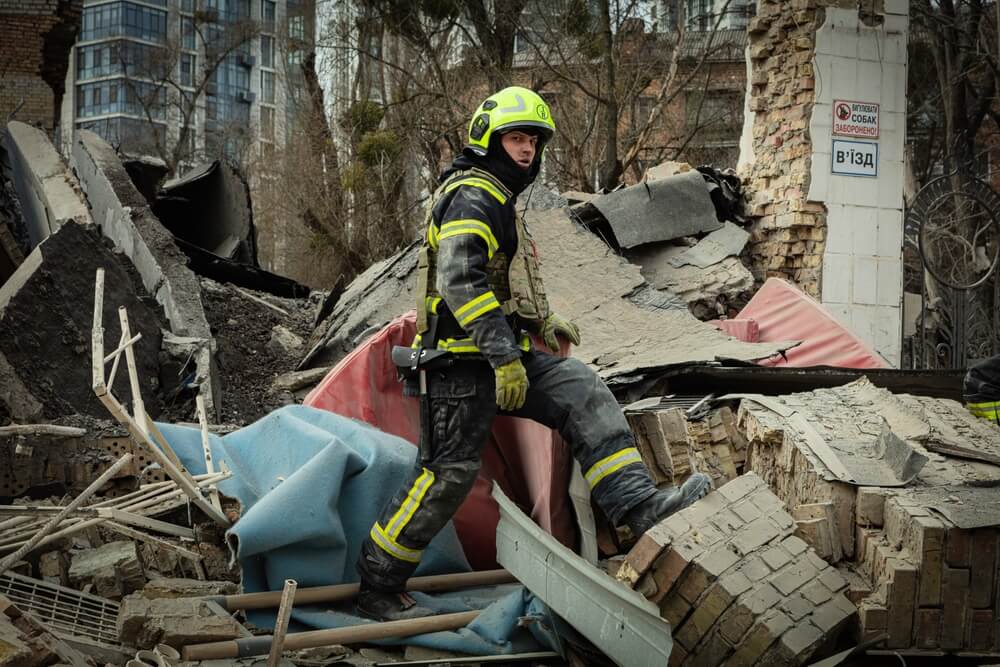The EU’s €140 billion reparations loan scheme for Ukraine has failed. So far. This financial lifeline would allow Kyiv to borrow now and repay later using future Russian reparations. Yet, it did not gain unanimous support.
Under the proposal, Ukraine would service the loan with funds obtained from Moscow after a peace settlement. If those reparations never materialised, the EU would step in to confiscate Russia’s frozen assets as collateral.
In response, Russia has threatened “harsh retaliation” if the law passes, warning that any EU move to seize or leverage its frozen assets would be treated as an “attack on Russian property”.
The comments amplified concerns in Brussels, where countries like Belgium—home to Euroclear, holding most of the €190 billion in frozen assets—and France cautioned that such actions could trigger lawsuits and expose the EU to financial risks.
A desperate effort or a sobering acknowledgement?
Yet beyond the political wrangling, this mechanism marks a deeper shift in the ethos of Western aid. What was once envisioned as post-war reconstruction capital—meant to rebuild Ukraine’s devastated cities and infrastructure—has now pivoted towards financing its active defence.
Even prospective Russian reparations, which remain a distant and uncertain prospect, are being reframed as potential funding for the war itself.
What’s driving this pivot? Is it a desperate effort to sustain Ukraine’s defence as other resources run dry, or a sobering acknowledgement that peace is nowhere in sight?
And if the focus shifts towards wartime survival, does it signal that Europe will commit to finding new resources for post-war recovery, or that Kyiv will eventually be left to seek alternative paths to rebuild on its own?
EU leaders argue that spending the money on defence now could save lives and territory
This proposal emerged amid ongoing discussions about possible peace formulas between Ukraine and Russia. Just days ago, Türkiye once again praised Donald Trump’s peace efforts. Turkish Foreign Minister Hakan Fidan called the current escalation a pre-negotiation tactic, predicting a breakthrough in Russia-Ukraine talks within months.
A few weeks earlier, President Volodymyr Zelenskyy reportedly told members of his Servant of the People faction during a closed meeting that a peace deal could be reached as early as next year, several MPs told me.
Against this backdrop, the attempt by some EU countries to redirect reparations-linked funds—initially meant for Ukraine’s post-war reconstruction—towards financing the war effort looks like a short-term plan without a strategic vision and without hope for the war to end in the timeline that the Americans are pushing for.
EU leaders argue that spending the money on defence now could save lives and territory. But that logic comes with an additional cost. Europe would later have to step in again with fresh reconstruction financing to rebuild what the war continues to destroy.
Ukraine’s long road to recovery
Ukraine cannot weather the post-war period without outside assistance. Its economy already depends on Western aid, and some MPs alert that Kyiv may soon need help just to cover military salaries.
 The UNDP estimates Ukraine’s war damage to reach at least U.S. $524 billion
The UNDP estimates Ukraine’s war damage to reach at least U.S. $524 billion
The budget deficit for 2026 is estimated at 18.4%, with 16 billion euros still unfunded this year. Inflation has hovered above 10 per cent for nearly a year, and much of the industrial base remains crippled. Under such conditions, a quick return to pre-invasion economic activity seems implausible.
The new reparations-loan concept reflects a narrower calculus in parts of the EU. One that prioritises sustaining Ukraine’s defences today rather than planning for the country’s future tomorrow.
When the proposal ran into opposition from Europe’s major economies, they reaffirmed their preference for using frozen Russian assets strictly for post-war recovery.
The EU has quietly fractured: France, Germany, Italy, and Belgium now lean towards exploring an eventual settlement, even if no concrete path exists, while Scandinavian and Baltic states insist on maintaining the hard-line stance against Moscow.
The UNDP estimates Ukraine’s war damage to reach at least U.S. $524 billion—a figure that extends beyond shattered infrastructure to include the enormous cost of demining operations that could last decades and the long-term challenge of rebuilding an economy strong enough to bring refugees home.